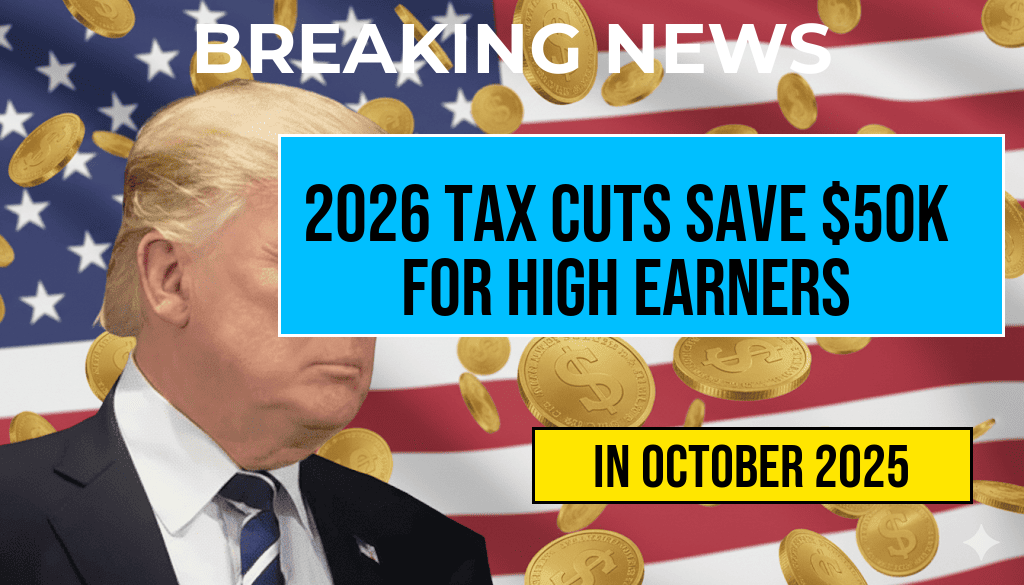Projected 2026 Tax Brackets Could Save a $50,000 Earner Hundreds as Top Rate Drops to 12%, Ensuring Real Income Gains
Tax reform proposals for 2026 suggest significant adjustments to the U.S. federal income tax brackets, potentially offering substantial savings for middle- and upper-middle-income earners. Notably, the top marginal tax rate is projected to fall from 37% to a more moderate 12%, creating a scenario where a taxpayer earning around $50,000 annually could see hundreds of dollars in increased take-home pay. These changes aim to simplify the tax code, reduce the burden on middle-income families, and promote economic growth. However, the implications extend beyond mere numbers, affecting how individuals plan their finances and how policymakers address fiscal sustainability.
Understanding the New Tax Brackets for 2026
The upcoming tax brackets are part of broader legislative proposals that seek to reshape the federal income tax structure, making it more progressive and less burdensome for a broad swath of the population. The key highlight is the reduction of the top marginal rate, which currently stands at 37%, to a more manageable 12%. This shift reflects efforts to align tax rates with historical norms and to ease the pressure on high earners, while also benefiting middle-income households through adjusted bracket thresholds and deductions.
| Tax Rate | Income Range (Single Filers) |
|---|---|
| 12% | $0 – $50,000 |
| 22% | $50,001 – $100,000 |
| 24% | $100,001 – $200,000 |
| 32% | $200,001 – $500,000 |
| 35% | $500,001 – $1,000,000 |
| 37% | Over $1,000,000 |
For context, these brackets represent a notable shift from current structures, which have more tiers and higher top rates. The new configuration simplifies the tax code and reduces the marginal rate on substantial portions of income for many taxpayers.
Impact on a $50,000 Earner: Savings and Real Income Gains
For individuals earning approximately $50,000 annually, the most immediate benefit is a reduction in their marginal tax rate from 22% to 12%. This change could translate into hundreds of dollars in annual tax savings, effectively boosting disposable income and decreasing financial strain.
Consider a single filer earning $50,000 who currently pays roughly $6,000 in federal income taxes. Under the proposed 2026 brackets, this individual could see their tax liability drop closer to $4,750—saving approximately $1,250 annually. This figure substantially exceeds typical annual adjustments for inflation and can enhance savings, debt repayment, or discretionary spending.
Ensuring Real Income Gains Amid Inflation and Cost of Living
While tax cuts provide immediate relief, their real value depends on accompanying inflation and rising living costs. The projected reform aims to mitigate these pressures by lowering the effective tax burden across various income levels. As the top rate drops, higher earners will also benefit from increased thresholds, encouraging investment and economic activity, according to proponents.
However, critics argue that such reforms must be balanced with fiscal responsibility, as lower tax revenues could impact government programs. The Congressional Budget Office (CBO) emphasizes the importance of sustainable policies to maintain public services without overburdening future taxpayers (source).
Broader Economic and Policy Implications
Reducing the top marginal rate to 12% aligns with historical tax levels seen during the 1950s and 1960s, periods marked by economic expansion and relative income stability. Policymakers argue that lower rates incentivize work, savings, and investment, potentially fueling economic growth. Conversely, some experts warn that diminished revenue could constrain government efforts on infrastructure, health, and education unless offset by economic gains or increased compliance.
What This Means for Taxpayers
- Middle-income households could experience meaningful savings, especially those near the $50,000 income level.
- High earners might see reduced rates at higher brackets, encouraging additional investment and savings.
- Tax planning will become more straightforward, with fewer brackets and lower marginal rates simplifying calculations.
For more background on the evolution of federal income taxes, the Wikipedia page on income tax in the U.S. offers a comprehensive overview. Additionally, Forbes provides ongoing analysis of legislative developments and their economic impacts (source).
Frequently Asked Questions
What are the projected changes to the 2026 federal tax brackets?
The 2026 tax brackets are expected to be adjusted, with the top tax rate decreasing to 12%, potentially benefiting high earners such as those making $50,000.
How will the reduction in the top tax rate impact a $50,000 earner’s net income?
The decrease in the top tax rate to 12% could result in significant savings for a $50,000 earner, allowing them to retain more of their income and experience real income gains.
When are these tax bracket changes expected to take effect?
The projected tax bracket adjustments are anticipated to be implemented in the year 2026, subject to legislative approval and confirmation by tax authorities.
Will these changes affect other income brackets besides the top rate?
Yes, the 2026 tax reform is expected to adjust multiple income brackets, potentially lowering rates across various levels, thereby providing broader tax relief.
How can taxpayers prepare for the upcoming 2026 tax changes?
Taxpayers should consider consulting with a tax professional to understand how the projected lower rates may impact their financial planning and explore strategies to maximize their tax savings.

Leave a Reply